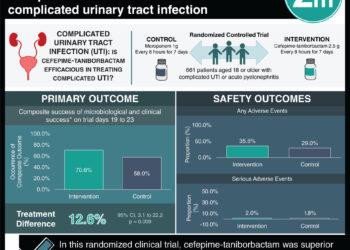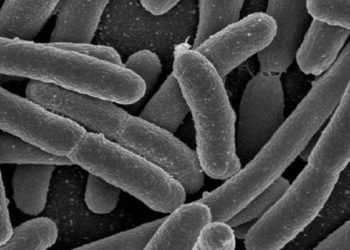Procalcitonin levels linked with acute pyelonephritis
Image: PD
1. Serum procalcitonin (PCT) levels were significantly associated with acute pyelonephritis and subsequent renal scarring in children with febrile urinary tract infections (UTIs).
2. Procalcitonin was more reliably able to detect acute pyelonephritis and renal scars than C-reactive protein (CRP) and peripheral white blood cell (WBC) count.
Evidence Rating Level: 2 (Good)
Study Rundown: Upper UTIs, or acute pyelonephritis (APN), are common causes of fever in children; they can cause renal scarring, which is associated with hhypertension and end-stage renal failure down the road. A dimercaptosuccinic acid (DMSA) scan is considered the best indicator of renal parenchymal involvement, but is not widely available, is expensive, and exposes children to radiation. Investigators sought to retrospectively determine whether serum PCT, CRP, or WBC count could be used as proxies for identifying bacterial APN and renal scarring in children with febrile UTIs. PCT proved to be a more accurate test than CRP or WBC count, providing strong evidence for its diagnosis of APN and scarring later in a febrile UTI. Results may have been limited by the inability to account for possible delays in first clinical indications of infection and PCT measurements, as well as lack of documentation of previous UTIs.
Click to read the study, published today in Pediatrics
Relevant Reading: Serum Procalcitonin for Prediction of Renal Parenchymal Involvement in Children with Urinary Tract Infections
In-Depth [retrospective cohort study]: Researchers conducted a search for all past cohort studies that included children with febrile UTIs, a PCT measurement, and subsequent renal DMSA scans [DB1] between January 1993 and September 2011. A meta-analysis was performed on 18 articles with a total of 1011 patients. Febrile UTI was defined as a fever (≥38oC) with bacteriuria. PCT was evaluated as a continuous, class, and binary variable and in all cases was significantly associated with APN and subsequent renal scarring (p < .001). For APN, PCT ≥ 0.5 ng/mL had an adjusted odds ratio of 7.9 (CI 5.8-10.9) with a specificity of 72% and sensitivity of 71%. For late renal scaring, PCT ≥0.5 ng/mL had an adjusted odds ratio of 3.4 (CI 2.1-5.7) with 79% sensitivity and 50% specificity. A decision curve analysis displayed that PCT was a stronger predictor of APN and renal scarring than either CRP or WBC count.
By Brandon Childs and Devika Bhushan
More from this author: X-ray after foreign body removal by esophagoscopy is not cost effective, Incidence of pediatric melanoma is increasing
© 2013 2minutemedicine.com. All rights reserved. No works may be reproduced without written consent from 2minutemedicine.com. Disclaimer: We present factual information directly from peer reviewed medical journals. No post should be construed as medical advice and is not intended as such by the authors or by 2minutemedicine.com. PLEASE SEE A HEALTHCARE PROVIDER IN YOUR AREA IF YOU SEEK MEDICAL ADVICE OF ANY SORT. Content is produced in accordance with fair use copyrights solely and strictly for the purpose of teaching, news and criticism. No benefit, monetary or otherwise, is realized by any participants or the owner of this domain.
[DB1]Looks like they included scans from 3 mo out when available.







